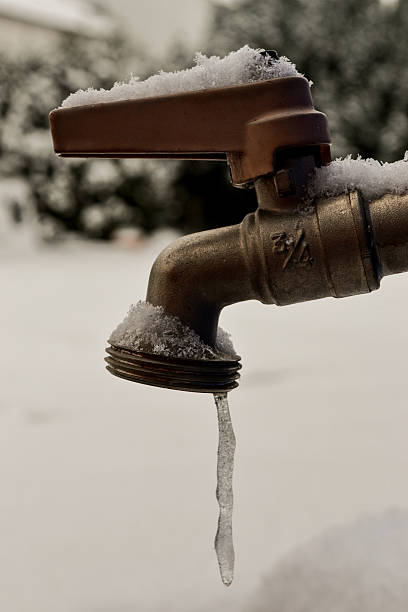What are your thoughts and feelings on How to Prevent Your Pipes From Freezing?

Cold weather can ruin your plumbing, particularly by freezing pipelines. Right here's how to stop it from taking place and what to do if it does.
Introduction
As temperature levels decline, the threat of frozen pipes boosts, possibly resulting in pricey repairs and water damages. Understanding how to prevent frozen pipelines is crucial for house owners in chilly environments.
Avoidance Tips
Protecting susceptible pipes
Cover pipes in insulation sleeves or make use of heat tape to safeguard them from freezing temperature levels. Concentrate on pipes in unheated or exterior locations of the home.
Home heating methods
Keep indoor areas effectively heated up, especially areas with pipes. Open closet doors to enable warm air to distribute around pipes under sinks.
Exactly how to recognize frozen pipelines
Look for lowered water flow from taps, uncommon odors or sounds from pipes, and noticeable frost on exposed pipelines.
Long-Term Solutions
Architectural modifications
Take into consideration rerouting pipes far from outside walls or unheated locations. Include additional insulation to attic rooms, basements, and crawl spaces.
Upgrading insulation
Purchase high-quality insulation for pipes, attic rooms, and wall surfaces. Proper insulation helps preserve constant temperatures and minimizes the threat of icy pipelines.
Protecting Outdoor Plumbing
Garden tubes and exterior taps
Disconnect and drain yard hose pipes prior to wintertime. Set up frost-proof faucets or cover outdoor faucets with insulated caps.
Understanding Icy Pipes
What causes pipelines to freeze?
Pipelines ice up when subjected to temperature levels below 32 ° F (0 ° C) for extended durations. As water inside the pipelines freezes, it increases, putting pressure on the pipe wall surfaces and possibly creating them to burst.
Dangers and problems
Frozen pipelines can lead to water system disruptions, property damage, and costly repair work. Ruptured pipes can flood homes and cause substantial architectural damages.
Signs of Frozen Piping
Recognizing frozen pipes early can stop them from bursting.
What to Do If Your Pipelines Freeze
Immediate activities to take
If you suspect frozen pipes, keep taps open up to ease pressure as the ice melts. Make use of a hairdryer or towels taken in hot water to thaw pipes gradually.
Verdict
Stopping frozen pipelines calls for positive measures and fast reactions. By understanding the reasons, signs, and safety nets, house owners can protect their pipes throughout winter.
5 Ways to Prevent Frozen Pipes
Drain Outdoor Faucets and Disconnect Hoses
First, close the shut-off valve that controls the flow of water in the pipe to your outdoor faucet. Then, head outside to disconnect and drain your hose and open the outdoor faucet to allow the water to completely drain out of the line. Turn off the faucet when done. Finally, head back to the shut-off valve and drain the remaining water inside the pipe into a bucket or container. Additionally, if you have a home irrigation system, you should consider hiring an expert to clear the system of water each year.
Insulate Pipes
One of the best and most cost-effective methods for preventing frozen water pipes is to wrap your pipes with insulation. This is especially important for areas in your home that aren’t exposed to heat, such as an attic. We suggest using foam sleeves, which can typically be found at your local hardware store.
Keep Heat Running at 65
Your pipes are located inside your walls, and the temperature there is much colder than the rest of the house. To prevent your pipes from freezing, The Insurance Information Institute suggests that you keep your home heated to at least 65 degrees, even when traveling. You may want to invest in smart devices that can keep an eye on the temperature in your home while you’re away.
Leave Water Dripping
Moving water — even a small trickle — can prevent ice from forming inside your pipes. When freezing temps are imminent, start a drip of water from all faucets that serve exposed pipes. Leaving a few faucets running will also help relieve pressure inside the pipes and help prevent a rupture if the water inside freezes.
Open Cupboard Doors
Warm your kitchen and bathroom pipes by opening cupboards and vanities. You should also leave your interior doors ajar to help warm air circulate evenly throughout your home.

Hopefully you liked our section about Preventing and dealing with frozen pipes. Thanks for finding the time to read through our blog post. Please pause to share this blog if you appreciated it. We thank you for your readership.
Call Today